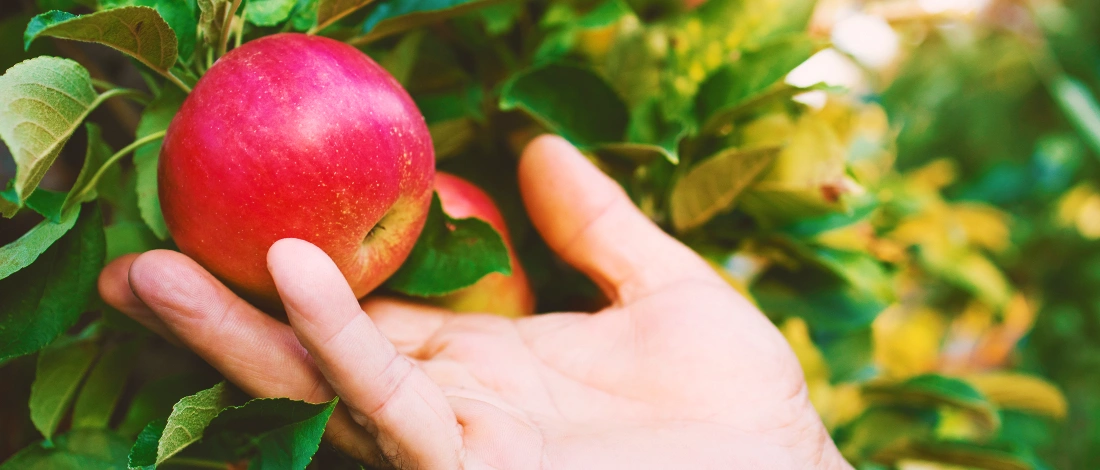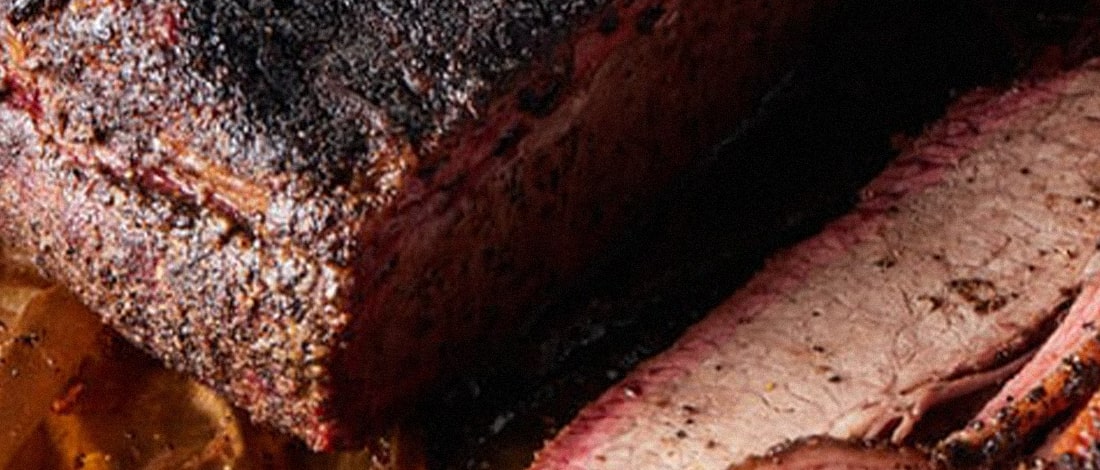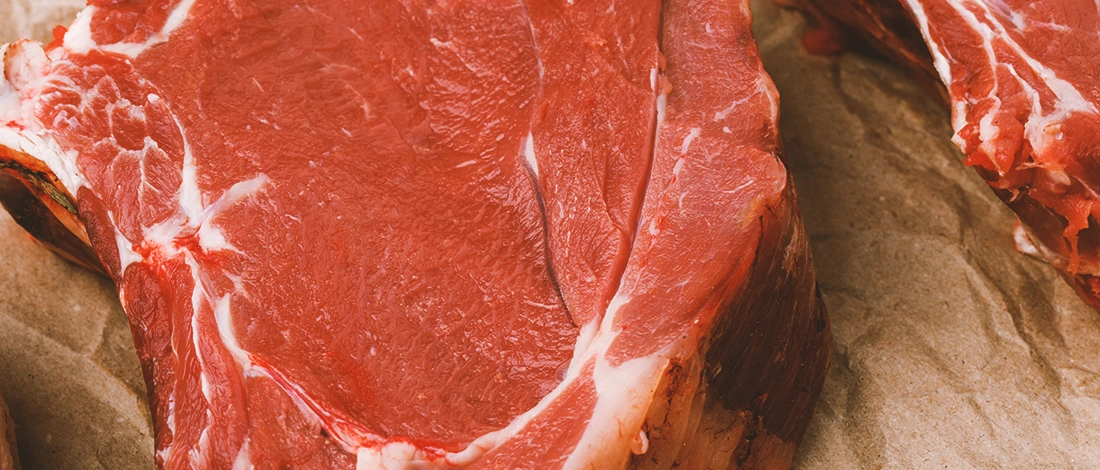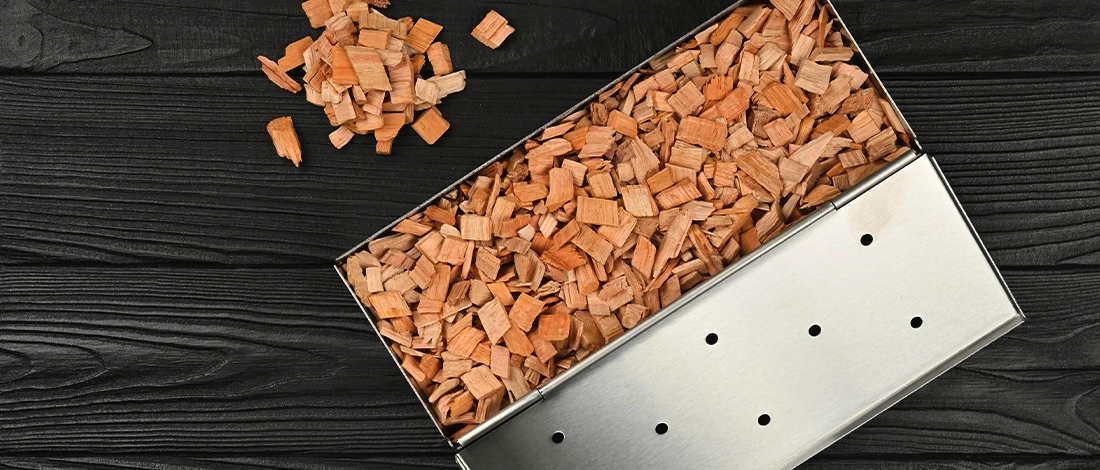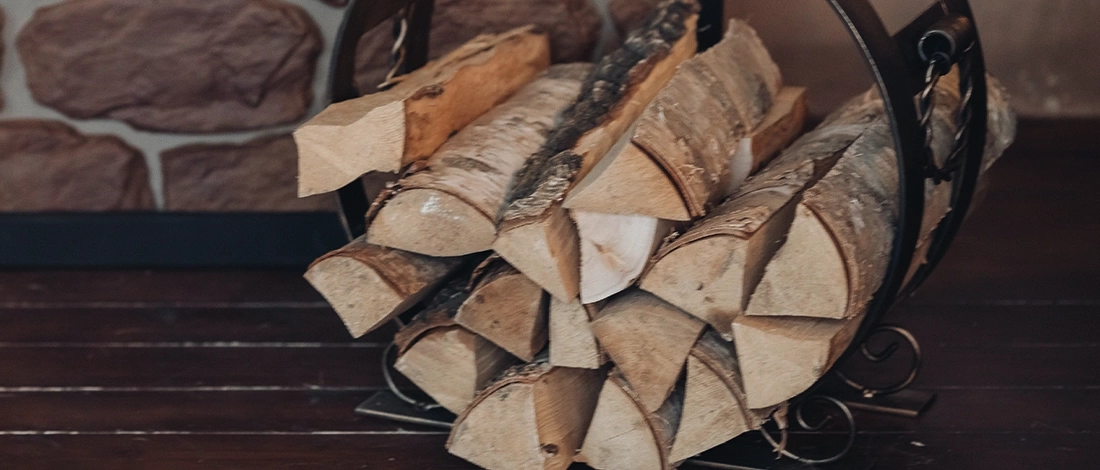One of the most common questions I hear from new barbecuers is how often they need to add wood to their smoker.
After all, this can make a big difference in the flavor of your food. As someone who has used a smoker for a long time, I will share my experience in this article.
Quick Summary
- Adding wood chips to a smoker depends on factors like the smoker model, desired smokiness, meat size, and cooking duration.
- Wood chips in an electric smoker add a smoky flavor and offer versatility with different wood types like mesquite, hickory, and apple.
- Wood chips can be used in a tray, a foil pouch, or a smoker box, depending on the smoker design.
6 Things To Consider When Adding Wood Chips To A Smoker

Many factors impact how often to add wood chips to your smoker. The best general rule of thumb is to add chips to your smoker when it is no longer making good smoke.
But here are some key things to keep in mind:
1. Size Of The Smoker
A larger smoker requires more chips to smoke meat than a smaller one. A small to mid-sized device may only need a couple of cups of wood chips, while a bigger smoker may need significantly more.
Some industrial-sized smokers use logs and branches to generate enough smoke.
Smaller fuel sources burn faster than large ones. This is because they have a larger surface area in contact with the air.
So, pellets burn faster than wood chips. Wood chips are faster than wood chunks [1]. Wood chunks faster than wood logs.
Since fuel size is usually related to device size, larger smokers usually need refilling less often than smaller smokers.
2. Wood Type
Different types of wood produce different flavors at a unique burn rate.
Some of the most common smoking wood is hardwood:
- Apple
- Pecan
- Maple
- Oak
- Walnut
- Mesquite
- Alder
- Hickory
- Pear
- Cherry
- Peach
These types of wood have a lower sap content and tend to be very dense. Fruit woods burn slower, produce the best flavor, and create clean smoke for a more extended time.
In contrast, softwoods include woods like:
- Pine
- Cedar
- Spruce
- Aspen
- Cypress
- Fir
- Redwood
3. Moisture Content
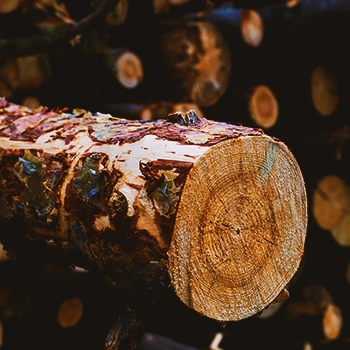
The moisture content of the smoke wood also impacts how long it will burn. As old wood dries out, it burns faster, and its ability to produce smoke decreases.
So, if your wood is not generating as much smoke as it used to, it may be time to add more.
To increase the longevity of their wood chips, many people soak chips in water before placing them in the smoker.
This is a controversial practice with two main potential drawbacks:
- It takes a day of soaking for any significant amount of moisture to enter the wood. Most people only soak their wood for a short amount of time, so the inner wood is not significantly wetter than it otherwise would be.
- Soaked wood does not actually produce more smoke than dry wood. What it does is generate steam. The steam from wet wood does not add taste to the meat like smoke does and it lowers the temperature of the smoker.
Regardless, wood with a higher natural moisture content will require less frequent refilling than wood with lower natural moisture content.
These woods are lighter and have more sap in them. As a result, they catch fire more quickly and produce acrid white smoke that smells like a campfire and makes red meat taste bad (and may give you food poisoning).
People rarely use wood chips from softwoods for smoking meat as a general rule because they create bad smoke.
4. Smoker Temperature
As the heat in the device rises, the wood chips will burn faster. So, if you are smoking at a higher temperature, you may need to add wood chips more frequently than if you were smoking at a lower heat.
If you are cold smoking, you will need to add wood much less frequently because you are actively trying to keep the temperature in the food chamber less than 100 degrees.
The higher the temperature, the more frequently you will need to monitor your device and add wood.
5. Your Flavor Preference
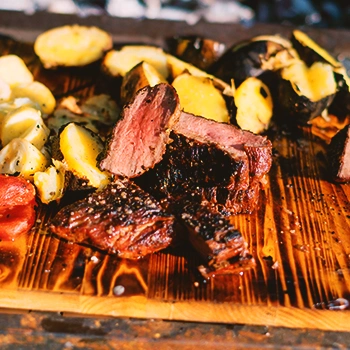
If you are looking for a smokier flavor, you may need to add hardwood more frequently to maintain the quality of smoke required for that intense smokey flavor.
However, if you prefer a more natural tasting meat, you may want to add wood less often.
This way, the smoke has less time to penetrate the meat, and as a result, the taste is not as intense. Instead of the smoke flavor, you will get more of the taste of the meat itself.
6. Type Of Food
The type of food you are smoking also affects how often you need to add wood. Smoked meat and fish, for example, require less frequent addition of wood chips than smoked cheeses or dried smoked meats do.
This is because the former foods absorb smoke much more quickly than the latter.
The most significant difference is in the length of time in which the smoking process occurs rather than the frequency of wood addition.
Harder, less penetrable foods will need longer smokes, which require more chip additions.
"The important message here is that individual minds, individual talent, and individual creativity will keep pushing BBQ and grilling curves."
- Jess Pryles, National Barbecue & Grilling Association
Smoker Type And Adding Wood
The most critical factor in determining how often to add wood is the type of smoker that you are using.
Electric Smoker
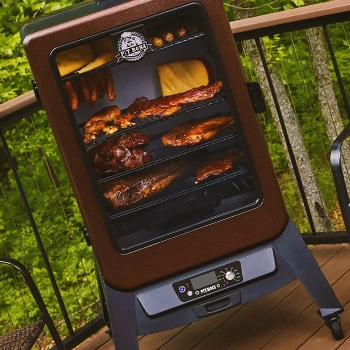
These smokers require little actual tending since they can maintain a constant temperature based on the thermostat [2]. The only ongoing work is adding wood chips to the electric smoker.
Most smokers come with a box or tray for holding the wood chips.
You can remove this chip box once the chips are done burning and replaced as needed, typically about two cups every forty-five minutes to an hour.
Charcoal Smoker
A charcoal grill takes more time and attention to use. The temperature needs to be monitored so that you can add air through a vent or change the amount of lit coals as needed.
The frequency of wood chips required depends on the type of meat you are smoking and your taste preferences.
However, most people find that wood needs to be added to the charcoal smoker in intervals of less than five hours.
Propane Smoker Or Gas Smoker
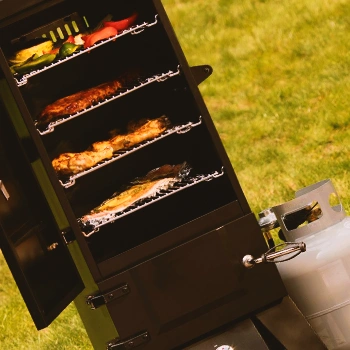
Propane smokers take less work than charcoal and wood smokers, but they still require some attention.
The wood chips need to be monitored so as not to burn up too quickly. Usually, adding more chips to the fire only every 60-90 minutes will keep the smoke flowing well.
However, if you see the smoke dying down, you may need to add wood more frequently to your gas grill.
And, if you're thinking about buying a new smoker, feel free to check out our list of best BBQ smokers on the market.
Offset Smoker
These smokers require the most attention of all. They use burning wood as a fuel source as well as for flavoring.
Because of this, you need to monitor the temperature and add more wood as necessary to achieve the desired results.
Regardless of the device you use, it is important to monitor your food and the amount of smoke around it to achieve your desired results.
This requires regularly checking and adding wood chips to the fire or hot coals as needed.
In an offset smoker, that period could be as short as 10 minutes or as long as 2-3 hours.
FAQs
Can You Use Too Much Wood When Smoking Meat?
Yes, you can use too much wood when smoking meat. If you do, it can lead to an intense and unpleasant smoky taste. It also may change the temperature within the smoker and affect the overall quality of your food. To avoid this, it is essential only to add hardwood as needed and get less smoke to achieve optimal results.
Should My Smoker Produce a Lot of Smoke?
Your smoker should not produce too much smoke. The device should certainly generate enough smoke that you see wisps of thin, blue smoke coming from the grill. However, it is possible to get excess smoke in the smoking experience, resulting in a disagreeable flavor.
How Do You Keep the Meat From Drying in a Smoker?
You can keep the meat from drying in a smoker by avoiding too much black smoke, adding humidity by placing a pan of water in the cooking box, and keeping the device at the proper temperature.
References:
- https://www.cuttingedgefirewood.com/news/wood-chunks-vs-wood-chips-which-is-better-for-smoking/
- https://www.foodfirefriends.com/electric-smoker-tips/#4_Temperature_Swings_Happen_But_They_Can_Be_Controlled


